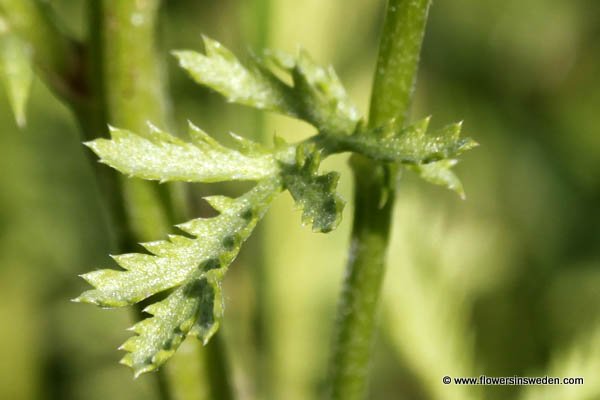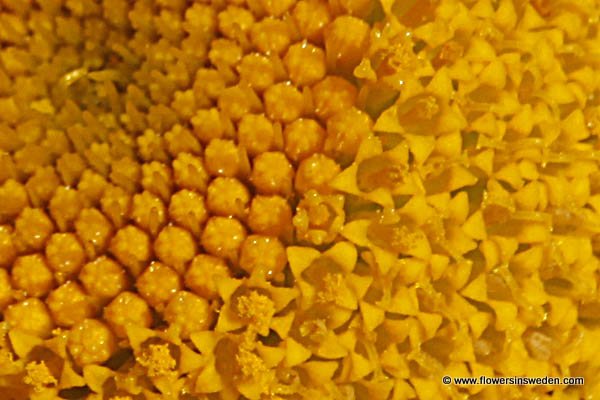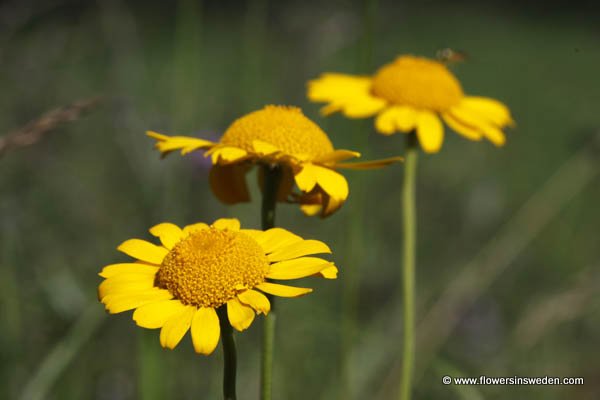|
|
| Life form: |
| Perennial herb |
| Stems: |
| Height 20–80 cm, branchless—short-branched, short-haired at least from top |
| Leaves: |
| Alternate, almost stalkless; blade 2 times pinnately lobed–with leaflets, top glabrous, underside short-haired, greyish, small lobes–leaflets toothed, terminated by a short bristle |
| Inflorescence: |
| Entirely yellow capitula, solitary terminating branches |
| Flowers: |
| Single flower-like 2.5–4.5 cm; capitula surrounded by involucral bracts; capitula flowers yellow, ray-florets tongue-like, tip 3-toothed; disc florets tubular, small; 5 stamens; pistil of 2 fused carpels; involucre hemispherical, involucral bracts in many rows, narrow, round-tipped, with membranous margins, with ciliate edges, hairy |
| Flowering Period: |
| June–September |
| Fruits: |
| Cypsela, flat, angular, faintly ridged, brown, tip with crowned by a membranous ring (a reduced pappus) |
| Habitat: |
| Banks, dry meadows, meadows, rocky outcrops, roadsides, railway yards, harbours, gravel pits, wasteland |
| Distribution: |
| Common in southern and central Sweden |

Derivation of the botanical name:
Anthemis. Chamomile. From Greek chamos, "ground", melos, "apple." Anthemis is the Greek name for this plant which has a long history, as a flavoring herb and in medicine.
tinctoria, tinctus, "to wet; to dye"; ori, "capability, functionality or resulting action". Used in dyeing.
- The standard author abbreviation L. is used to indicate Carl Linnaeus (1707 – 1778), a Swedish botanist, physician, and zoologist, the father of modern taxonomy.
- The standard author abbreviation J. Gay is used to indicate Jacques Étienne Gay (1786 - 1864), a Swiss-French botanist, civil servant, collector and taxonomist.
- The standard author abbreviation Guss. is used to indicate Giovanni Gussone (1787 – 1866), an Italian academic and botanist


|




